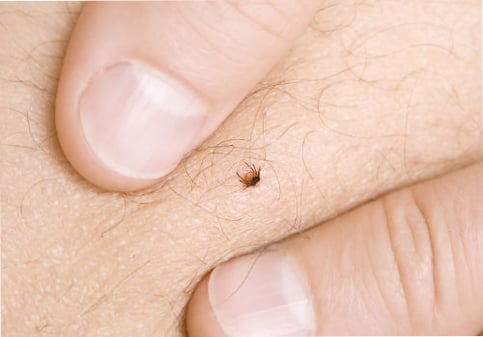Understanding Lyme Illness-- Necessary Awareness for Avoidance
Lyme disease stays a significant public wellness concern, mostly sent with the bites of infected ticks, specifically in regions with dense vegetation. The very early identification of Lyme illness is essential, yet many people continue to be uninformed of its symptoms or the environments that position the highest possible threat.
What Is Lyme Condition?
If left without treatment, Lyme condition can proceed to a lot more extreme phases, potentially affecting the joints, heart, and nerve system. Patients may experience arthritis, neurological issues, or heart disorders. The condition can be testing to detect, as its signs and symptoms can mimic those of other diseases. Diagnostic methods normally include a combination of professional examination and lab screening, consisting of serological assays to discover antibodies against Borrelia burgdorferi.
Prompt acknowledgment and therapy are crucial in taking care of Lyme condition and protecting against problems, with early antibiotic treatment generally leading to desirable results.
How Lyme Illness Spreads
Lyme illness primarily spreads through the bite of contaminated black-legged ticks, also called deer ticks, which lug the germs Borrelia burgdorferi. These ticks are commonly discovered in woody or grassy locations, usually staying on shrubs or low vegetation. They need a blood meal from a host, such as animals or human beings, to replicate and grow.
Transmission usually occurs when ticks connect to the skin and remain for a prolonged period, normally 24 to 48 hours. The danger of infection boosts with the period of accessory, as the microorganism is sent from the tick's saliva right into the host's blood stream. Ticks can be energetic during warmer months, particularly in spring and summer, making exterior activities a prospective risk for direct exposure.
While black-legged ticks are the primary vectors, various other types, such as the Western black-legged tick, can likewise send Lyme illness. It is necessary to be vigilant in areas where ticks prevail. Preventative actions include using safety apparel, making use of tick repellents, and carrying out detailed tick checks after exterior tasks to decrease the possibility of bites and subsequent transmission of Lyme illness.
Symptoms and Diagnosis
Recognizing the signs and symptoms of Lyme disease is important for timely diagnosis and treatment, as very early treatment can dramatically affect recuperation. The most well-known early symptom is the erythema migrans breakout, which shows up as a round, red sore with a central clearing up, frequently looking like a "bull's- eye." This rash normally develops within 3 to thirty days after a tick bite and might be accompanied by flu-like signs such as fever, chills, exhaustion, muscular tissue aches, and migraines.

Diagnosis of Lyme condition primarily depends on scientific assessment, taking into you could try here account the patient's signs and symptoms and potential exposure to ticks in native locations. Laboratory examinations, including enzyme-linked immunosorbent assays (ELISA) complied with by Western blot tests, can support the diagnosis but are not definitive in early-stage Lyme illness. Trigger recognition and diagnosis are crucial for starting ideal antibiotic therapy, which is most reliable when administered early in the condition course.
Prevention Strategies
Avoiding Lyme condition calls for an aggressive approach, specifically for individuals who invest time in areas where ticks prevail. The first line of defense includes wearing appropriate clothing, such as lengthy sleeves and lengthy pants, preferably made from tightly woven fabrics - Lymecare Alliance. Light clothes can help in detecting ticks more conveniently. On top of that, putting trousers into socks and utilizing tick-repellent items including DEET or permethrin can significantly lower the risk of tick add-on.
On a regular basis checking oneself, children, and family pets for ticks after outside tasks is crucial. Ticks should be without delay removed making use of fine-tipped tweezers, understanding them as near to the skin's surface area as possible. It is recommended to bath within 2 hours of returning indoors, as this can assist eliminate ticks prior to they connect.

Therapy Options
Efficient management of Lyme condition pivots on prompt and appropriate treatment choices, which largely include antibiotic therapy. Early localized Lyme condition is frequently treated with oral antibiotics such as doxycycline, amoxicillin, or cefuroxime axetil for a period of 10 to 21 days.
In instances of very early shared Lyme condition, where neurological or cardiac symptoms might occur, a much longer training course of intravenous anti-biotics or dental prescription antibiotics may be called for. For patients experiencing relentless symptoms after initial therapy, referred to as Post-Treatment Lyme Condition Disorder (PTLDS), a much more complicated monitoring approach may be required. This can involve a multidisciplinary approach, dealing with not just the physical signs but additionally emotional elements, as exhaustion and cognitive problems prevail.
It is essential for individuals to take why not look here part in open interaction with their medical care carriers to tailor treatment plans to their details requirements, guaranteeing the ideal possible outcomes in the administration of Lyme illness.
Final Thought
Lyme disease presents significant wellness dangers mainly due to its transmission through contaminated black-legged ticks. Continued recognition and education about Lyme illness are important in reducing its influence, consequently advertising much healthier areas and protecting public health and wellness versus this pervasive tick-borne illness.
Lyme illness largely spreads out via the bite of infected black-legged ticks, likewise understood as deer ticks, which bring the microorganism Borrelia burgdorferi. Lymecare Alliance.While black-legged ticks are the main vectors, various other varieties, such as the Western black-legged tick, can additionally transmit Lyme illness. Preventative actions include wearing safety apparel, using tick repellents, and conducting thorough tick checks after outside tasks to lower the probability of attacks and succeeding transmission of Lyme disease
Diagnosis of Lyme illness largely depends on medical assessment, Get More Info taking right into account the person's signs and symptoms and prospective direct exposure to ticks in endemic locations.Lyme disease postures significant wellness risks mainly due to its transmission through infected black-legged ticks.
Comments on “Lymecare Alliance: Your Partner in Lyme Condition Education And Learning and Support”